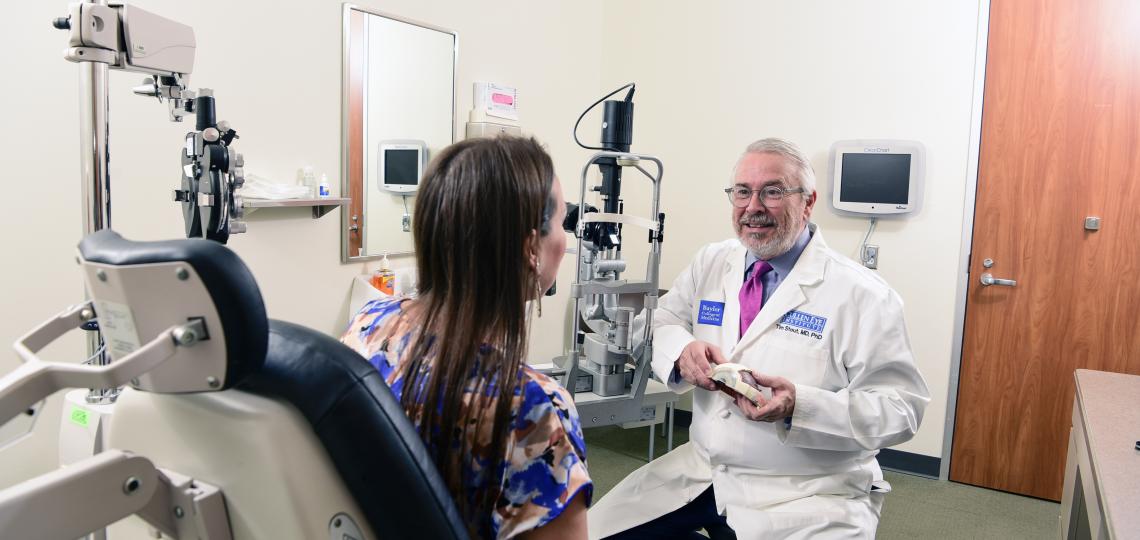Refractive Surgeries in AL: Expert Procedures for Clear Vision
Wiki Article
Every Little Thing You Required to Find Out About the most up to date Technologies in Glaucoma Treatment and Eyecare
In the realm of eye health and wellness, innovations in the therapy and management of glaucoma have been gradually progressing, paving the way for boosted individual treatment and outcomes. From cutting-edge analysis devices that supply unmatched understandings into the disease development to ingenious surgical methods that assure greater accuracy and quicker recuperation times, the landscape of glaucoma therapy is undergoing a considerable transformation. With the emergence of unique drug treatments, telemedicine options allowing remote surveillance, and a change towards personalized treatment strategies customized to individual people, the field of eyecare is witnessing a standard change. Keep tuned to uncover how these most current advancements are reshaping the approach to glaucoma treatment and revolutionizing the future of ocular health and wellness.
Advanced Diagnostic Technologies
Advanced analysis modern technologies play a crucial role in the very early detection and monitoring of glaucoma, allowing for a lot more reliable treatment and monitoring of the problem. Amongst these technologies, optical comprehensibility tomography (OCT) stands apart as a non-invasive imaging technique that supplies in-depth cross-sectional pictures of the retina, optic nerve head, and retinal nerve fiber layer. This high-resolution imaging assists clinicians examine structural modifications in the eye brought on by glaucoma, enabling them to interfere quickly.Furthermore, aesthetic area screening, such as automated perimetry, is an additional crucial diagnostic tool for assessing glaucoma-related vision loss - cataract care service. This examination measures the sensitivity of an individual's aesthetic field, assisting to discover any kind of locations of vision loss or distortion. By combining OCT imaging with aesthetic field screening, health care suppliers can obtain an extensive understanding of the illness's progression and tailor therapy plans as necessary
Minimally Invasive Surgical Treatments
In the realm of glaucoma monitoring, the emphasis moves in the direction of minimally invasive surgeries as an aggressive technique to address the progression of the problem following sophisticated diagnostic evaluations such as optical comprehensibility tomography (OCT) and visual area screening. Minimally intrusive glaucoma surgeries (MIGS) have gained appeal due to their efficiency in reducing intraocular pressure while minimizing the risks and recovery times connected with conventional glaucoma surgical treatments. These treatments are normally done with tiny lacerations, often together with cataract surgical treatment, making them much less invasive and a lot more comfortable for clients.Some common MIGS procedures include trabecular micro-bypass stents, which boost the outflow of liquid wit, and micro-sized implants that enhance drainage in the eye. Furthermore, laser procedures such as careful laser trabeculoplasty (SLT) offer a non-invasive option for reducing intraocular stress. By incorporating these minimally intrusive strategies into glaucoma administration, ophthalmologists can supply patients with reliable treatment choices that prioritize safety and quick healing, inevitably improving long-term end results for people with glaucoma.
Unique Drug Therapies
Arising medicine treatments present appealing methods for boosting the medicinal monitoring of glaucoma, using cutting-edge strategies to resolve intraocular stress control and condition progression. One unique medication treatment that has amassed focus is Rho kinase preventions. These medications work by targeting the Rho kinase pathway, which plays a function in regulating the tone of the trabecular meshwork, the eye's drain system. By inhibiting this path, Rho kinase preventions aid to boost aqueous wit outflow, consequently decreasing intraocular stress.
Telemedicine and Remote Monitoring
With the development of novel medication treatments expanding the treatment landscape for glaucoma, the assimilation of telemedicine and remote monitoring arises as a critical part in improving client care and illness management. By using telemedicine and remote surveillance, medical care carriers can boost access to care, enhance patient compliance, and spot possible concerns early, leading to better end results for individuals with glaucoma. Accepting telemedicine and remote tracking in glaucoma monitoring represents a considerable advancement in optimizing person care and treatment efficiency.
Personalized Treatment Strategies
Progressing beyond standard one-size-fits-all approaches, tailored therapy approaches tailored to individual patient characteristics are changing the monitoring of glaucoma. By personalizing treatment strategies based on aspects such as age, condition extent, way of life, and other health and wellness conditions, ophthalmologists can maximize outcomes and enhance person fulfillment.Individualized treatment techniques in glaucoma entail a comprehensive evaluation of each individual's special account. This might include hereditary testing to identify details threat factors, imaging strategies to assess structural adjustments in the eye, and practical examinations to examine aesthetic area loss. By integrating these individualized understandings, healthcare suppliers can develop targeted treatments that deal with the underlying reasons for glaucoma development for every person.
Moreover, advancements in technology have actually made it possible for the advancement of personalized therapy options such as minimally invasive glaucoma surgeries (MIGS) tailored to the client's details requirements - hearing service near me. These procedures offer effective intraocular pressure control with fewer complications, improving the general quality of refractive surgeries in al treatment for glaucoma clients. Embracing customized treatment approaches notes a significant paradigm change in glaucoma monitoring, stressing precision medicine to supply customized solutions for much better patient outcomes
Verdict
Finally, the most recent advancements in glaucoma therapy and eyecare consist of advanced analysis innovations, minimally invasive operations, unique drug treatments, telemedicine and remote tracking, and personalized treatment approaches. These improvements are revolutionizing the means we treat and diagnose glaucoma, supplying more reliable and individualized choices for individuals. By remaining updated with these advancements, health care specialists can supply better treatment and enhance end results for people with glaucoma.
With the advancement of unique medicine therapies expanding the therapy landscape for glaucoma, the integration of telemedicine and remote tracking arises as a pivotal element in boosting person care and condition management. retina service near me. Accepting telemedicine and remote surveillance in glaucoma monitoring represents a substantial improvement in maximizing person treatment and therapy efficiency
In final thought, the most recent advancements in glaucoma therapy and eyecare include advanced diagnostic technologies, minimally invasive surgical treatments, unique medicine therapies, telemedicine and remote tracking, and tailored treatment methods.
Report this wiki page